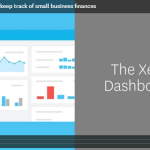Small Business Marketing Pt2
The top 10 must-have tips for email marketing
Part I of this guide focused on small business marketing on a budget and the tools to do this. There are many different ways of marketing to your customers, ranging from direct mail to telephone calls, online banners to radio ads, Facebook to Twitter. But businesses often see high returns from email marketing.
As Constant Contact says, that’s because people regularly check their email and spend a lot of time in front of it. Sending email is cheap, too, but how do you get your message across effectively?
- Build relationships with your readers
Not all of your readers are the same. Some may be lifelong customers, while others will be new to your business, so segmenting your email lists is very important. Have a goal in mind when you send an email, whether it’s attracting new customers to your store, driving traffic to your website or simply raising awareness. That goal should dictate how you craft your message. Take your time to think this through, so your customers feel connected to you. - Start small
Don’t send your first email newsletter to your entire mailing list. Start small, with perhaps a few dozen or a few hundred recipients. Then watch the response. If it’s good, send it to more people. If it’s not, tweak and test out a new version. - Make it easy to opt in and opt out
Email marketing is permission based. That mean customers have indicated (through a sign-up form on a website or a number of other ways) that they want to receive emails from you. But they might change their mind. As important as it as to make it easy for people to receive your emails, you must also make it easy for them to opt out or unsubscribe. Be sure to follow their wishes, or risk being labeled a spammer. - Personalise your emails
If half your customers are middle-aged women then there’s no point sending them emails offering cheap football boots. Or is there? If their children play sports at school, they could be just the customers you’re looking for. This is why business information is so important. Never make assumptions. Use the data to find out what you need to know, then send the right offers to the right customers. - Use good content to keep your readers engaged
Think of the recipients of your emails as more than customers. Think of them as readers too. Give them a narrative, a story about the products you’re selling. Help them to engage with your products, to find a way to weave them into their own lives. Your emails should not just be used as a sales vehicle but also as an opportunity to foster relationships. Be sure to include helpful hints and best practices that will bring value to your readers. Keep your content interesting and fresh, and always relevant. You will build an engaged audience of loyal customers this way. - Strike a balance with length
It’s important to find the sweet spot in terms of the length of your emails. You need to figure out what’s going to be most effective for the majority of people on your list. Keep in mind that a lot of emails are read on mobile devices, so you’re working with less real estate. On the other hand, an email can be too short. If there isn’t sufficient content to grab your readers’ interest, they’ll move on to the next email. It’s all about testing out different options to find a balance that works for you and your readers. - Get the tone right
There’s a fine line between marketing emails that add value and are welcomed by the recipient, and ‘spam’ or junk mail which will be deleted immediately. Don’t go over the top with exclamation marks and wild claims. Try to use a friendly, authoritative but not arrogant tone. Your goal is to get the customer on your side and keep them there. - Offer something of value
There’s nothing wrong with simply listing your products and their prices. That’s useful information for people who are already looking to buy. But you can go further, to convert those who are undecided. Offer discounts for people ordering in response to your email. Two-for-one deals, discounts on multiple purchases, free shipping for orders over a certain value – there are plenty of ways to add value and get your customers to spend more. - Track email responses
With the right software, email marketing lets you track the response of your campaigns, by embedding unique links into each message. Some of the response metrics might include:- Who opened your email.
- Which links in the email were clicked.
- Who forwarded your email to others.
- Who shared your email on social media.
- Which emails led to sales, online reviews, event registrations and other destinations.
This will provide insight into the type of information your audience is most interested in, and will give you a benchmark to improve upon every time you hit ‘Send’.
- Don’t spam!
Sending out email ‘blasts’ of generic, over-the-top sales text is a waste of time – for you and for your customers. You’ll lose existing subscribers faster than you can sign up new ones. Effective email marketing takes time, thought, and consideration. You must be focused on building relationships.
Email communication is a good way to hone your marketing skills. Once you’ve mastered it, you can move on to other outlets, such as social media and mobile marketing. Although the platforms might be different, many of the skills and tactics required are the same.



